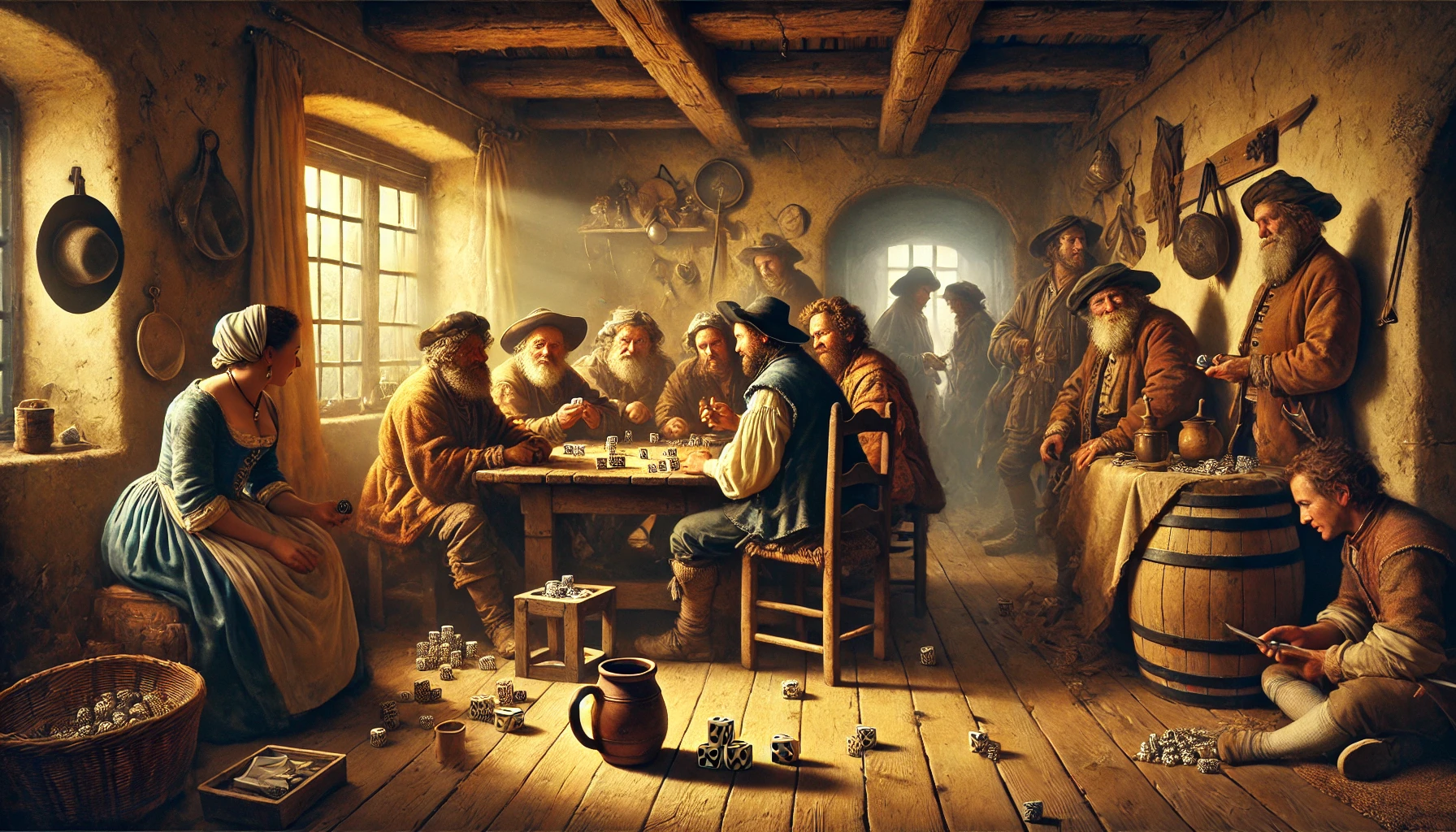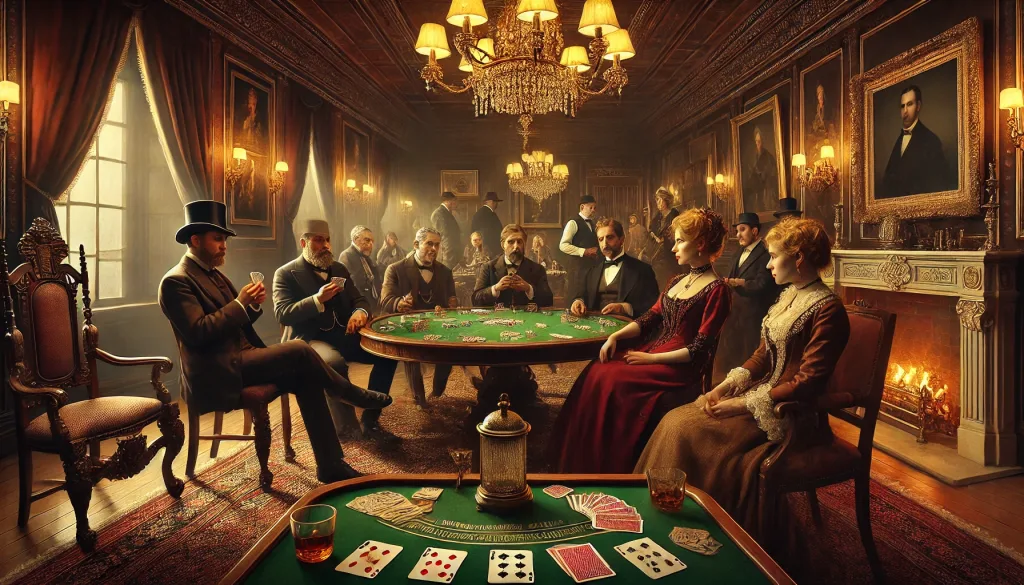
Hidden Symbols of Gambling in Art
Visual art often conceals more than meets the eye. One of the most intriguing elements in paintings across various eras is the depiction of gambling. These representations go beyond mere gaming scenes, conveying profound symbolic meanings that reflect the social, cultural, and philosophical ideas of their time. From moral lessons to explorations of human psychology, gambling in art continues to be a source of fascination and interpretation for both art historians and enthusiasts.
Gambling in Classical Painting
Classical art from the 16th to 18th centuries frequently used gambling as a metaphor for human nature. Artists like Caravaggio depicted card games and gambling scenes to illustrate moral dilemmas and social conflicts. In his painting “The Cardsharps,” gambling is shown as a scene of deceit and loss. The images of players become symbols of human weakness and the desire for easy gain. Beyond the cards and coins, these artworks often carried layered meanings about the consequences of temptation and indulgence.
Artists during this period often intertwined gambling with religious and social allegories. For instance, many paintings juxtaposed scenes of gaming with symbols of divine judgement or redemption. These works were intended to provoke thought about the transient nature of wealth and the dangers of prioritising material desires over spiritual well-being. Gambling was not just a pastime; it became a lens through which broader societal issues were examined.
Moral Lessons in Art
Paintings from this period often carried moral messages. For example, artists portrayed gamblers falling into the traps of their own vices. These scenes reminded viewers of the dangers of greed and immorality, urging caution and prudence. Through vivid expressions and carefully constructed narratives, these artworks resonated deeply with their audience, serving as cautionary tales against a life ruled by vice. The inclusion of everyday figures in these works made the moral lessons accessible and relatable, ensuring their impact endured across generations.
The Symbolism of Cards in 19th-Century Art
In the 19th century, gambling ceased to be solely a negative symbol. Artists like Paul Cézanne used cards as elements of everyday life. His series “The Card Players” portrays the game as part of ordinary existence, free from overt moral judgement. Card-playing scenes became reflections of social relationships and class distinctions, capturing the nuances of human interaction and societal structure. This shift marked a significant evolution in how gambling was perceived within the artistic narrative.
Beyond mere depictions of gameplay, 19th-century art highlighted the subtleties of human connection. The table, with its players gathered in concentration, became a stage for exploring camaraderie, rivalry, and even solitude. The focus shifted from the act of gambling itself to the moments of tension and unity it fostered. These artworks captured the complexity of social dynamics, making them timeless studies of human behaviour.
Class Distinction Through Card Games
Card games were often a means to display social status. In 19th-century art, the wealthy and the working class were depicted at the same table, illustrating a certain social dialogue occurring through gambling. These paintings served as visual commentaries on the shifting dynamics of class and the shared human experiences that transcended economic boundaries. Through meticulous detail and realistic portrayals, artists invited viewers to reflect on the intricate interplay of power, privilege, and vulnerability.

Modern Perspectives on Gambling in Art
Contemporary artists often use gambling symbolism to explore themes of chance and risk in life. Works by Damien Hirst and other modern creators incorporate cards and dice as symbols of uncertainty and the world’s instability. These interpretations challenge traditional notions of gambling, framing it as a reflection of the unpredictable nature of existence. The dice, the shuffled deck, or the roll of a wheel become powerful metaphors for the randomness that shapes human destiny.
Modern art also pushes boundaries by blending traditional imagery with contemporary themes. The portrayal of gambling moves beyond the tangible to delve into abstract concepts such as decision-making, probability, and the passage of time. By integrating these elements, artists create works that resonate with audiences navigating a fast-paced, ever-changing world. Gambling becomes not just a game but a metaphor for the choices and risks that define our lives.
Gambling as a Conceptual Art Element
In conceptual art, gambling symbolises the human need for risk. It can serve as a metaphor for financial markets or personal relationships. For example, dice in sculptures become symbols of randomness and life choices. These pieces often provoke viewers to question their assumptions about control, chance, and the forces that shape their reality. By embracing the uncertainty inherent in gambling, artists remind us of the delicate balance between order and chaos in our own lives.
Gambling in art continues to be a topic that intrigues and inspires. From classical allegories to modern conceptual interpretations, cards and dice remain enduring symbols of essential aspects of human existence. The evolution of gambling imagery reflects broader shifts in society’s values and perceptions, ensuring its relevance in the artistic dialogue for generations to come.
